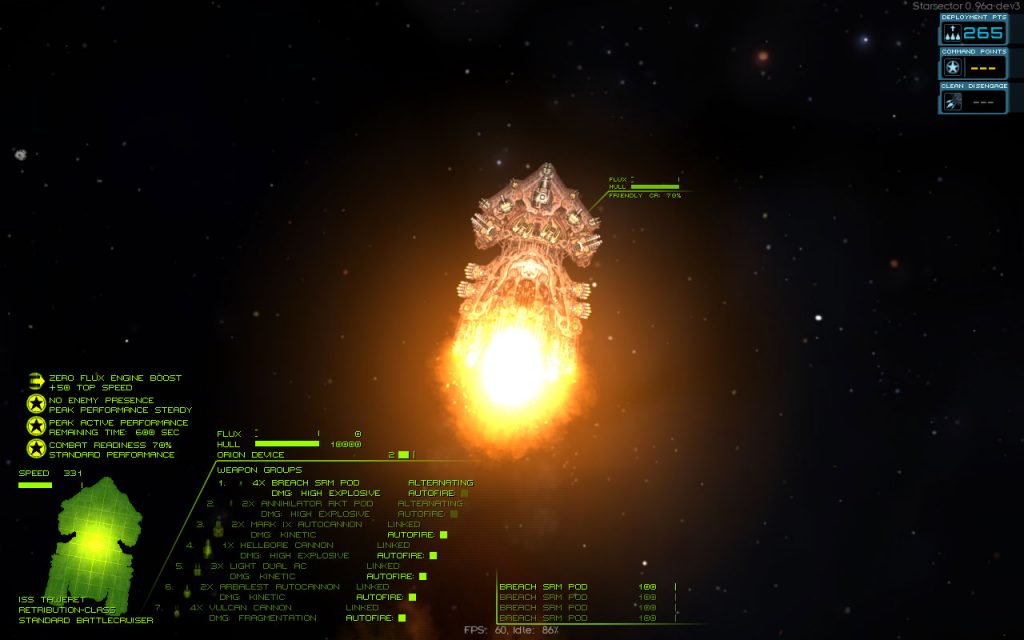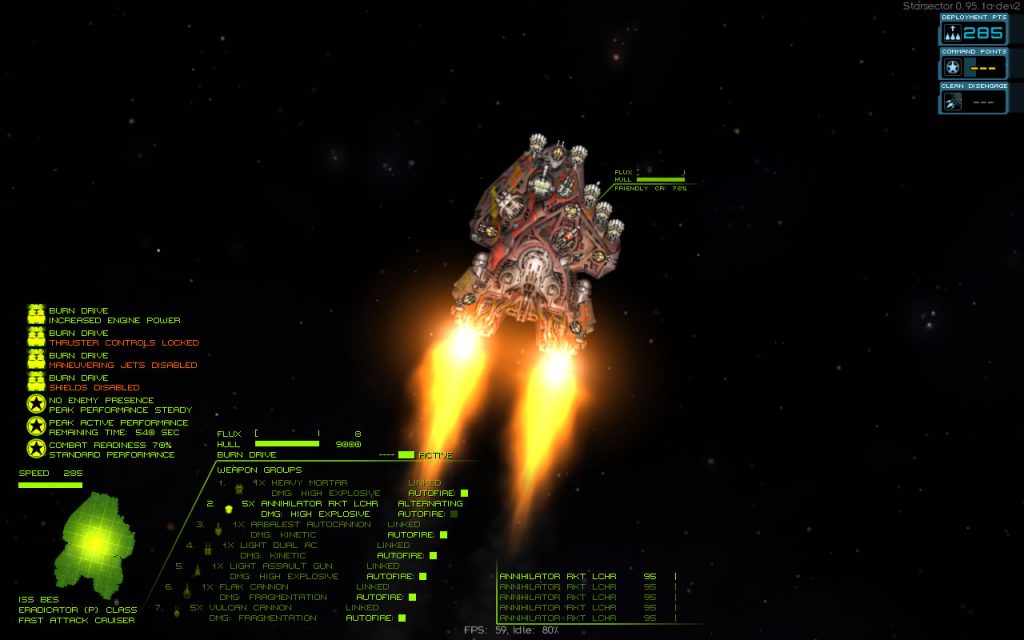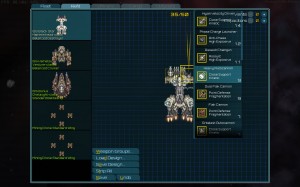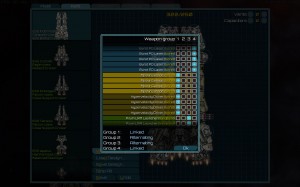I just added two new ships to the game, and thought I’d talk about the process that’s involved in determining ship stats, the types of weapon slots that they have, and the role they fill in the game. First of all, there are already lots of ships – around thirty if you don’t count fighters, and about a dozen more if you do. If you’re like me, that might set off some alarms in your head – why are there so many? Is it just variety for the sake of variety, or is it in fact meaningful? That’s what I always wonder about when I see a game tout “500 this” and “200 something-or-other” in their feature list.
Not every ship needs to bring something unique or interesting to the table – if nothing is “average”, then it’s hard for anything to be special. On the other hand, if two ships fill the same role in the same way, that’s a bad sign – it’s a wasted art asset, and complexity added to the game that doesn’t pull its weight by giving meaningful choices to the player. Still, having more ships is good if they pull their weight – it gives the player more choices and avenues for advancement, never mind more varied opponents. Having enough ships to give factions a stronger identity is important, too.
So, what are the factors that differentiate ship designs?
First of all, there are 5 size classes – fighter, frigate, destroyer, cruiser, and capital ship. We’ve also established three tech levels for ship designs – low tech, midline, and high tech. Low tech ships have high armor and a mix of ballistic and missile weapons. Midline ships have a mix of all types of weaponry, and average armor and shields. High tech ships rely on energy weapons and missiles, and typically have lower armor and excellent shields, in addition to improved mobility. Ships can also have launch bays for fighters – with some ships being dedicated carriers.
Just those factors combine to create a lot of combinations – a low tech cruiser? A high tech carrier? You can also easily make a ship distinct by giving it something special – such as, say, a weapon slot that’s too large to be normally found on ships of that size, or exceptional movement speed. Where the weapon slots are located and what arcs they cover is key to how a ship plays out – for example, having an important weapon battery point slightly to starboard will affect the best way to pilot a ship and will be a constant tactical consideration.
To top it off, not all ships are dedicated combat vessels – they have stats such as cargo, fuel, and crew capacity. Down the line, I’d also like to add active ship systems (such as afterburners, a combat teleport, or an ECM device). Between all these, keeping ship designs varied is easy.
Up til now, we haven’t had any particularly large high-tech ships in the game that could also put out a lot of firepower. But that’s about to change – allow me to introduce the Paragon-class battleship and the Odyssey-class battlecruiser. These two are anything but average.
Read the rest of this entry »



























